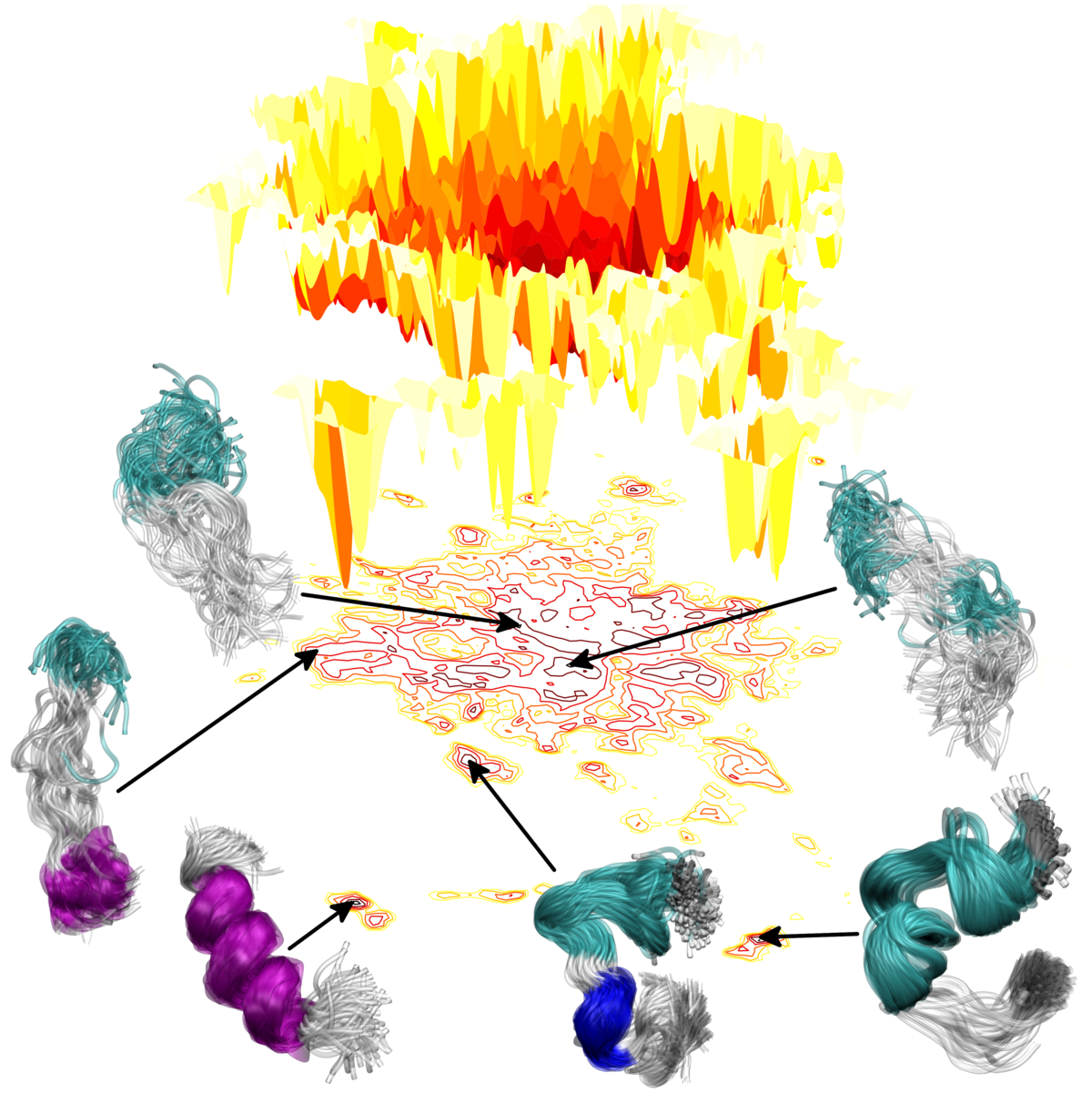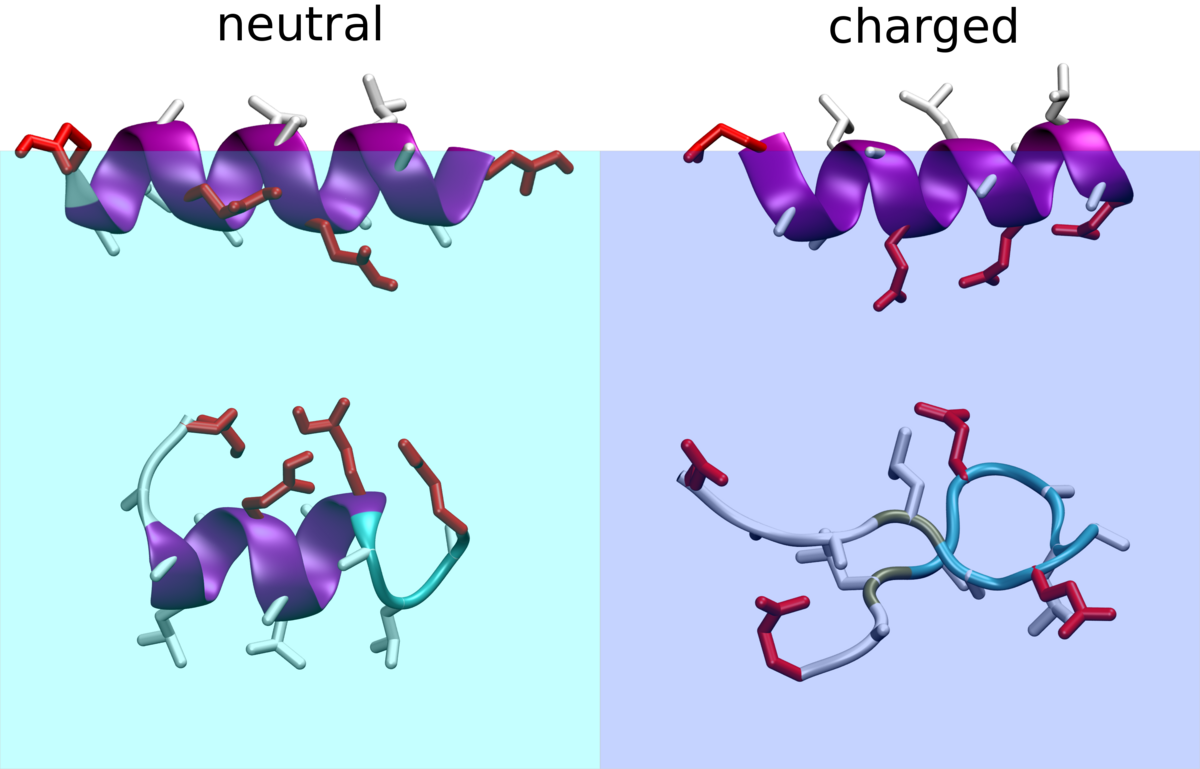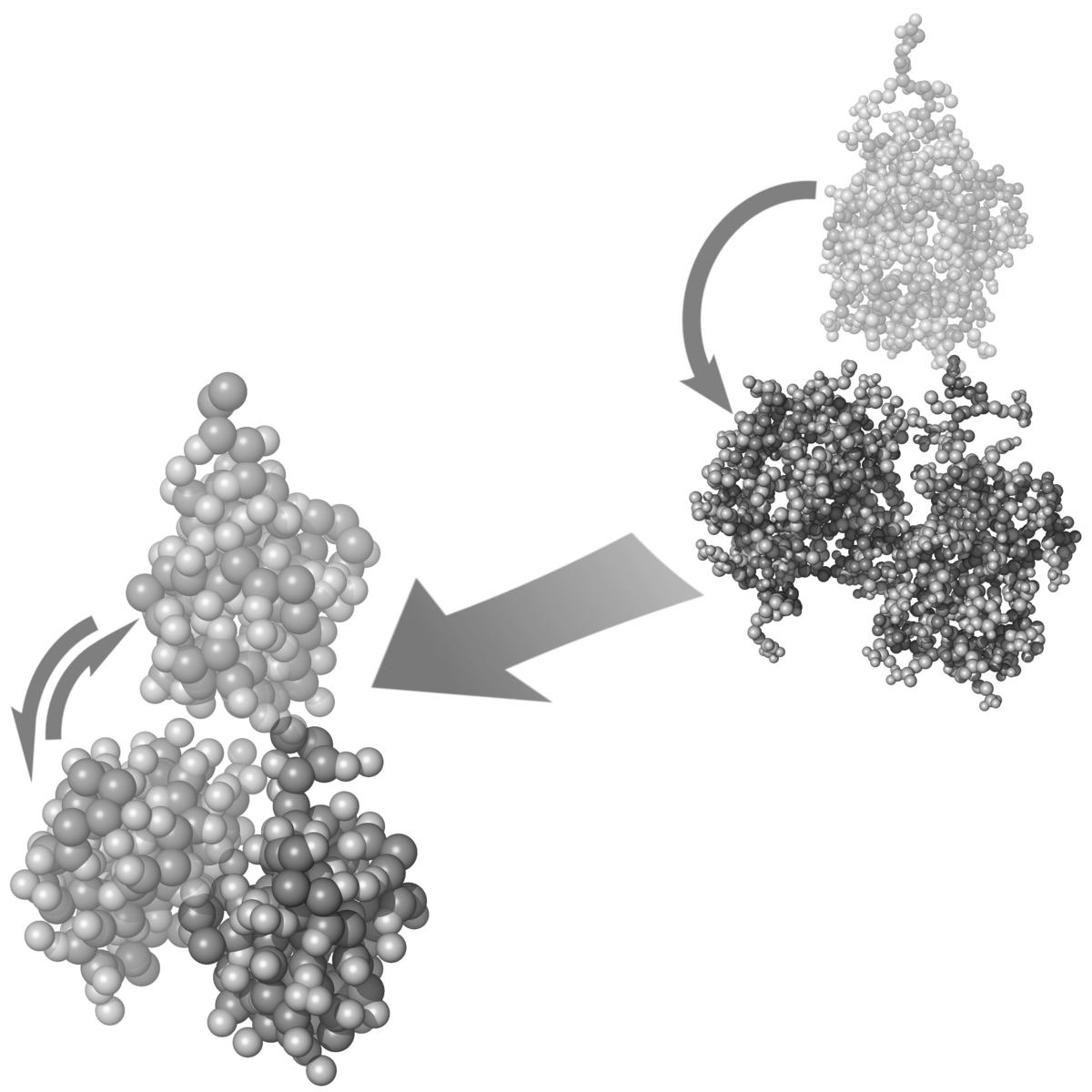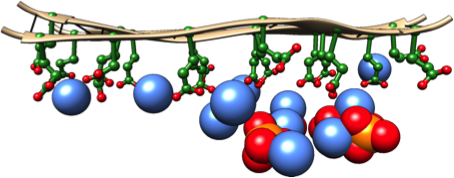Biological and bio-inspired systems

Intrinsically disordered proteins and peptides (IDPs) are biomolecules that lack well-defined secondary and tertiary structure. The great interest in this class of systems is motivated by an increasing awareness of their biological relevance. For example, several proteins that are considered intrinsically unstructured in solution such as α-synuclein, polyQ, τ-protein, and Aβ are involved in neurodegenerative diseases, such as Parkinson's disease and Alzheimer's syndrome. This is presumably due to their propensity for self-aggregation, fibril formation, but possibly also due to their interaction with biomembranes. Often, these pathophysiologically relevant phenomena are accompanied by conformational transitions where the proteins change from their disordered state into a structurally more defined β-sheet-rich or α-helical state.

We carry out atomistic and coarse grained studies of environmentally driven folding. Amphiphilic peptides respond to the presence of interfaces, pH-changes or other changes in the solution composition by conformational transitions. Such peptides are for example initially designed as cell penetrating agents for drug targeting. Atomistic simulation studies can accompany experiments from collaborators to understand the driving forces for different folds and folding transitions. Moreover we investigate how coarse grained models can be designed such that they reproduce such responses to environment changes.

Recognition of proteins by their antibodies is enabled by their ability to fold into a well defined native structure. Molecular modelling techniques are outstanding tools to study the stability and dynamics of such structures and gain knowledge about mechanistic details on the atomistic scale. This faciliates understanding and interpretation of biological observations.

A controlled route towards biocompatible nanostructures and peptide-templated mineralization has immense relevance for drug delivery and tissue engineering. It is desirable to gain control over the understanding of parameters governing structural transformations and/or biomineralization process with an aim to generate nanostructures and artificial bone tissue of required morphologies and characteristics . Experimental methods are very useful to provide a macroscopic picture and are usually the first step towards understanding the intriguing details. The ability to fine-tune the morphology and control the characteristics of nanomaterials is highly desired. To do this an understanding of the response/influence of external factors (ionic strength, pH, etc.) at an atomistic-level is necessary. However, even with recent advancements, many times, experimental techniques alone are not sufficient to obtain such fine details. Classical MD simulations are relevant when the goal is to decipher details at an atomistic-level. However, classical MD, at times, is not capable due to time and length scale constrains. Therefore, we are utilizing multiscale simulation coarse-grained simulations and/or advanced sampling methods to understand the factors that control morphology in various systems, and biomineralization processes.
